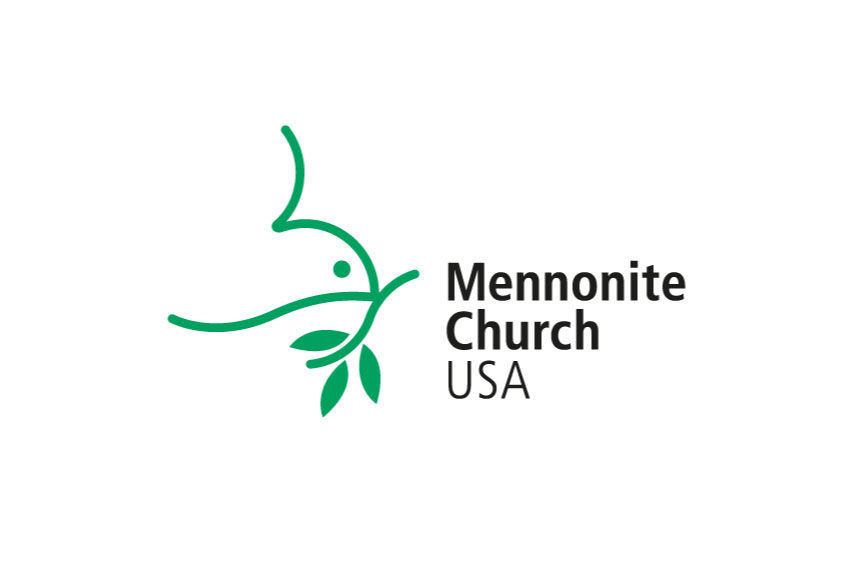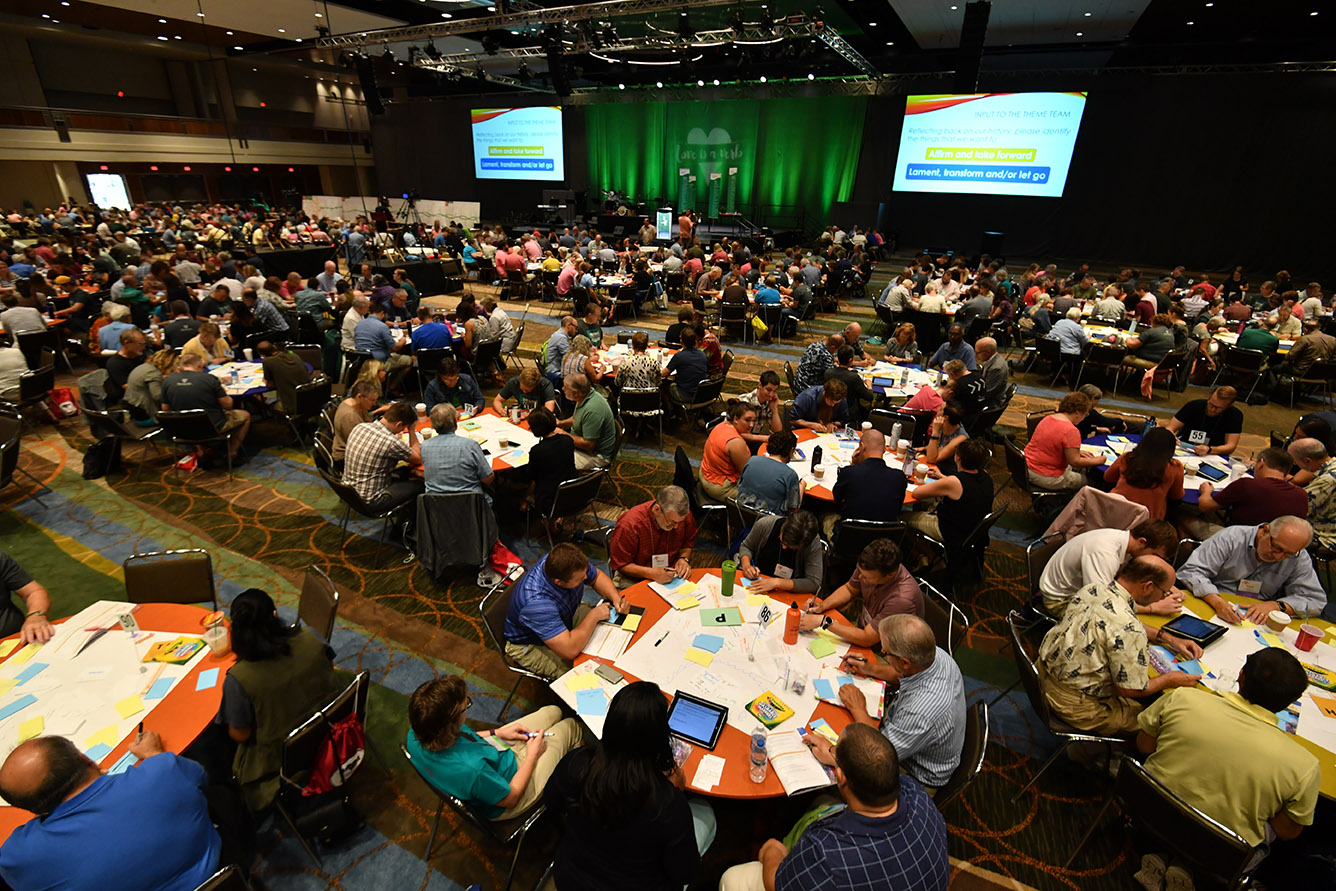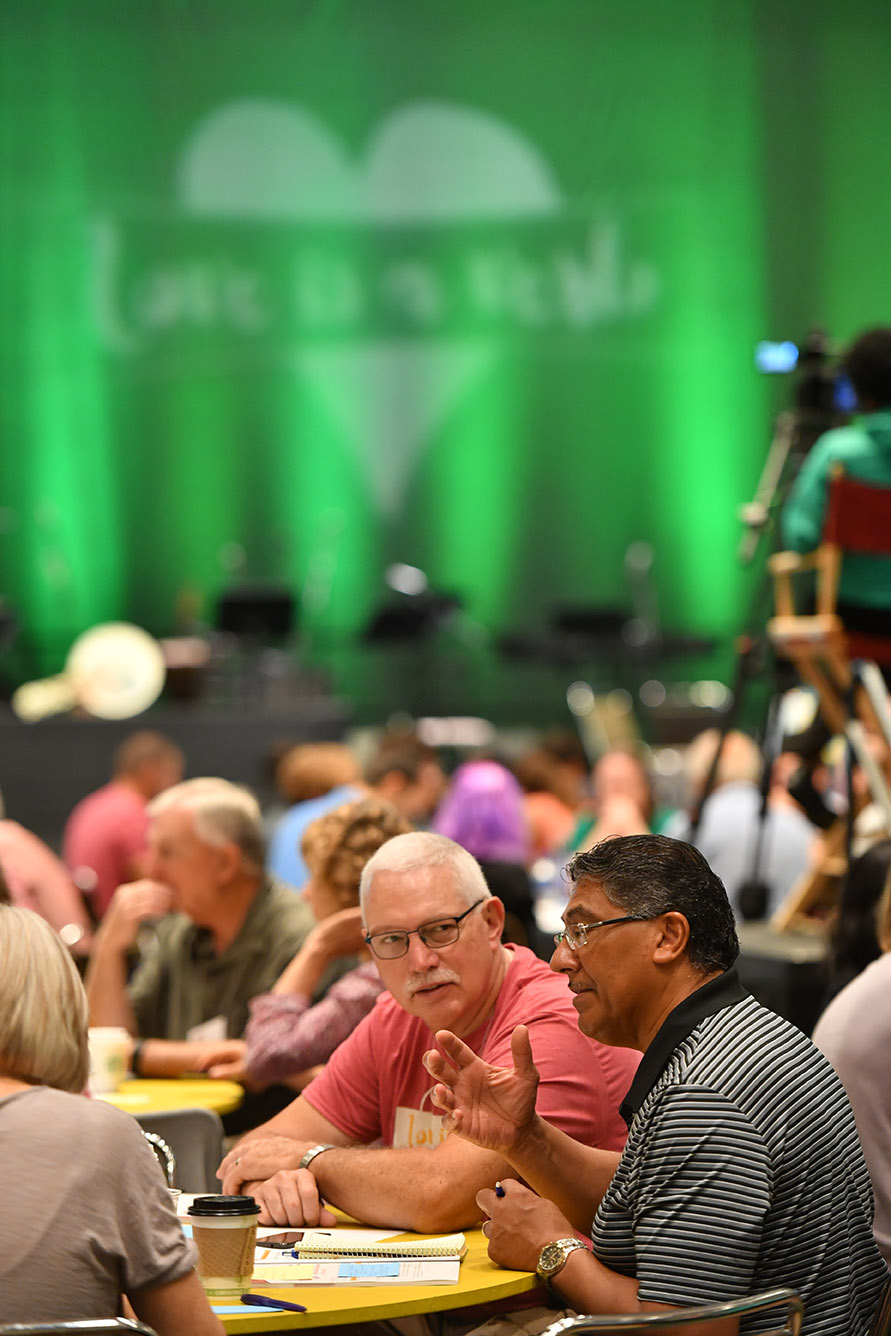 ORLANDO, Florida (Mennonite Church USA) — Filled with conversation, music, laughter, “audacious visions” and Mennonite “quirks,” the second day of the Future Church Summit at the Mennonite Church USA convention shifted the focus from past to future and from internal to external.
ORLANDO, Florida (Mennonite Church USA) — Filled with conversation, music, laughter, “audacious visions” and Mennonite “quirks,” the second day of the Future Church Summit at the Mennonite Church USA convention shifted the focus from past to future and from internal to external.
The day started by re-visiting the discussion of church history and experience from the previous night, asking what needs to be lamented and what should be affirmed. Participants then examined questions about diversity, evangelism, being a peace church, the central challenges the world faces, what it means to follow Jesus as Anabaptists and what kind of church God is calling the Mennonites to be. A World Café-style conversation about the possibilities for Mennonite Church USA capped off the day.
In both table groups and plenary sessions, using several discussion models, the sharing was wide-ranging, thoughtful and often lively, bringing a variety of perspectives to the topics at hand. Participants worked hard throughout the day — facilitator Catherine Barnes of Eastern Mennonite University’s Center for Justice and Peacebuilding observed after one break, “I can see this was a much needed interlude!”
A session simultaneously asking “What does it mean to be a peace church in the 21st century?” and “What is our evangelism in the 21st century?” brought particularly energetic comments.
Nancy Rohrer Sauder of Lancaster, Pennsylvania, brought an “audacious idea” of building on the success of past Mennonite initiatives that have “changed the way mental health care is delivered in the United States,” asking, to applause, “Could we take on the prison system? Could we start with mental health care, behavioral health care? Could we bring the love of Jesus to the prison system?”
Ryan Ahlgrim, a self-proclaimed “baby boomer” pastor from Richmond, Virginia, called for church planting and asked, “How about if all of us start a new church in our retirement? The best way to do evangelism is to live it in our community.”

The Future Church Summit at #MennoCon17. Photo by Kenneth Krehbiel.
Hillary Watson of Lombard, Illinois, reflected that she had converted many more people to vegetarianism than she had to Jesus Christ. “What do you love so much that you want to share it with people?” she asked. “If you don’t feel that way about your faith, what is going to get you there?”
And Elizabeth Soto Albrecht, former moderator of Mennonite Church USA, noted simply, “I am part of the Mennonite Church because it is a peace church.”
Barnes commended participants who reframed some of the questions during the conversation, seeking to tie peace and evangelism more closely together.
“Sometimes the powerful thing that comes out of a process like this is that we begin to ask the right questions,” Barnes said.
More challenging moments were part of the discussion too. Barnes reminded the group to “recognize there are many people who are not here” after a Native American participant lamented, “I don’t see a lot of my people (in the church). We don’t have a voice right now.”
Other laments identified earlier by the Theme Team — a group that is working with thousands of pieces of information to find common threads from the table group conversations — included inequalities in power, racism in the church, boundaries that exclude, painful patterns of division, passive-aggressive avoidance of issues and a declining focus on spiritual vitality.
On the other hand, affirmations came for the Jesus-centered focus of the church, a community that cares for each other and studies scripture together, the witness for peace, the affirmation of women in ministry, the work of the Holy Spirit, nonconformity and “just our general quirkiness.”
Diversity and its implications also received attention, as participants were invited to share in a “Samoan circle” plenary that brought rotating voices to the stage with Barnes reflecting back what she heard.
“Diversity is really hard because you have to listen to people who are very different and hold a lot of things in creative tension,” Kevin Goertzen of Springdale Mennonite Church in Waynesboro, Virginia, said. “It’s just hard work. It’s also extremely beautiful. … We need each other.”
Cyneatha Millsaps, lead pastor of Community Mennonite Church in Markham, Illinois, said the church should “encourage people to speak their truth.”

Table discussions at the Future Church Summit in Orlando 2017. Phot by Kenneth Krehbiel.
The Theme Team’s report on that section noted, “More voices mean we need to find more creative ways to be patient and listen.” Other observations: Diversity gives greater access to the spectrum of God’s gifts, change brings fear of the unknown, staying in conversation about diversity requires spiritual discipline, Christ must intentionally be kept at the center and “one size may not fit all.”
“The Holy Spirit is present and unruly,” Isaac Villegas shared from the Theme Team’s report. “It is complicated, beautiful and messy at the same time.”
The team also pointed to having a witness that embodies “the full shalom of God,” creating counter-cultural communities, building strong partnerships, being immersed in scripture and prayer, showing “bold humility in risk-taking, in repentance, in hope” and learning from the gifts and voices of the global church.
In addressing the question, “What kind of church is God calling us to be?,” participants cast a wide range of visions, such as: a church that is safe for everyone, one that does the “simple things” while working out the more complex ones, one that is “saturated with God’s love,” one that “values and supports artists and creators,” one that is courageous, one that lifts up underrepresented voices, one that can “embrace our weird,” one that intentionally prays for each other and one that is authentic.
After a bit of evening warm-up humor delivered by the improv group Panic Squad, the summit participants delved into an hour-long World Café discussion, a format that had people moving around to different tables and building on ideas of those who were previously at that table in a sort of “cross-pollination.”
Dreaming about what Mennonite Church USA could become, participants sent many ideas to the Theme Team — who received a standing ovation at the end of a long day. Among aspects of the denomination the participants especially valued having a “community of belonging,” a shared Anabaptist identity and heritage, mutual support, the perspectives of a diverse body and a sense of being able to do more together than individually.
A final report will be produced at the end of the Future Church Summit tomorrow morning, shaped by the findings that are gradually emerging from each of the various segments.
“It is as if each time another face is revealed, building on what has come before,” Barnes said.
Following the conclusion of the Future Church Summit, the delegate assembly will re-convene to act on the summit’s results.
# # #

